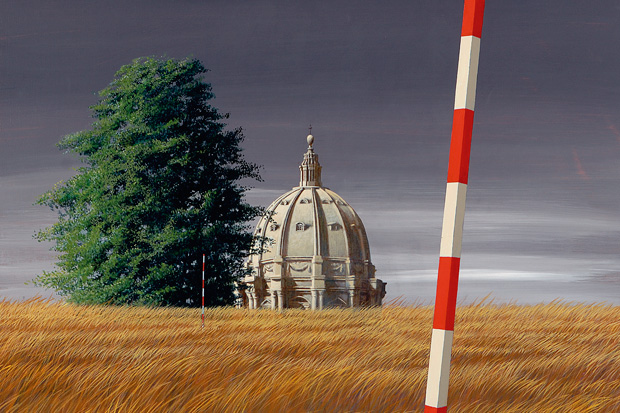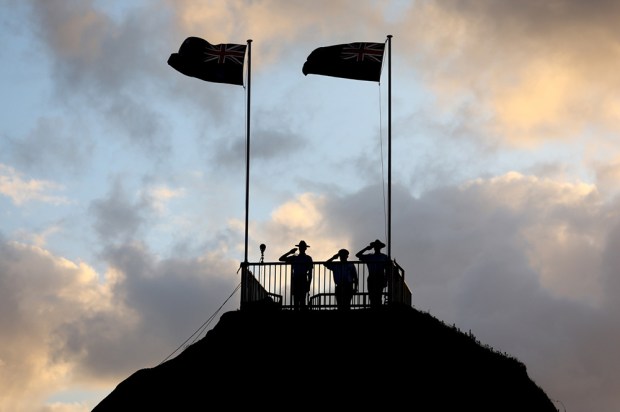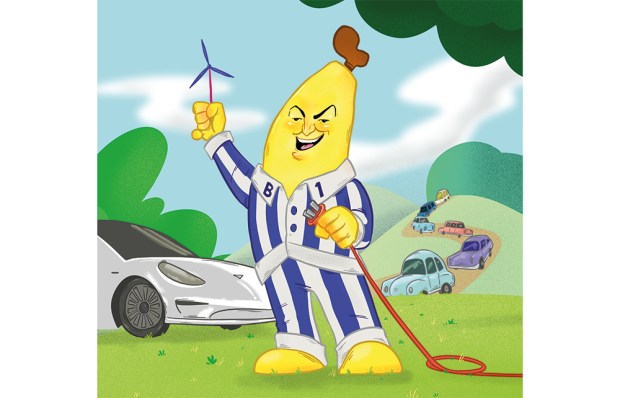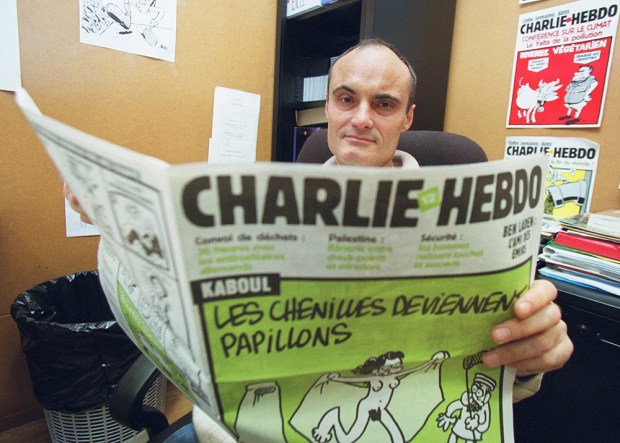I was lying in bed with a cold on a typically overcast Melbourne afternoon, when an email provided a moment of grim hilarity. In its regular newsletter, a certain prominent contemporary art gallery announced the recipient of its annual Emerging Curator Award. The lucky winner’s interests included ‘indigeneity, memory, erasure, queer possibility, body sovereignty, and multilingual plurality.’ Irony, however, was clearly omitted from this extensive list. If you accept Wittgenstein’s dictum that ‘the limits of my world’ correspond to ‘the limits of my language’, then the current fetish for hollow post-structuralist jargon does not bode well for the world of contemporary art. In spite of any pretensions to ‘inclusivity’, language of this kind is used to confound, to intimidate and to evade its audience. All while ultimately signifying nothing.
It was invigorating, then, to see an exhibition based on good old-fashioned painting after venturing out to the Yarra Valley the other weekend. In collaboration with the Hazelhurst Regional Gallery & Arts Centre of Sydney’s Sutherland Shire, the TarraWarra Museum of Art has staged The Triumph of Modernism, a wide-ranging exhibition of modern Australian painting curated by the venerable Edmund Capon, former director of the Art Gallery of NSW. Drawing largely from the TarraWarra collection – which owes much to the munificence of founders Marc and Eva Besen – it features the likes of Fred Williams, Ian Fairweather, Howard Arkley, Aida Tomsecu, Brett Whiteley, Joy Hester, Imants Tillers, Jeffrey Smart, Sidney Nolan and Roger Kemp.
Paradoxically, the exhibition’s major strength is also its underlying weakness. As is befitting of a private collection, the Besens have collected standalone works of Australian art over many decades. These are not intended to be representative – either of a particular artist’s oeuvre or of Australian visual culture at large. But while there is no onus on TarraWarra to present an encyclopaedic retrospective of Australian art, the highly selective nature of the collection has served to noticeably constrain Edmund Capon’s role as curator. The cards may only be shuffled so many ways when Capon attempts, as he puts it, to tell ‘the story of modern Australian art’. As such, the exhibition seemingly leaps from one colossal masterpiece to the next – John Olsen’s Salute to Cerberus (1965), Arthur Boyd’s Bride in a Cave (1958), Jeffrey Smart’s The Construction Fence (1978) – with few smaller, secondary works to fill in the gaps. The overall impression is one of sheer eclecticism, rather than a coherent whole.
Nonetheless, Capon draws some interesting juxtapositions. His technique seems to consist of pairing a mainstay of the ‘Australian tradition’ – whatever that is – with a lesser-known, contemporary practitioner. Hence Fred Williams is hung alongside William Delafield Cook; Roger Kemp is adjacent to Aida Tomescu. Similarities in genre are used to underline dissonances in style and intent.
Though its title may suggest otherwise, Delafield Cook’s Lemon (2009-10) is one of the finest works in this selection. As is typical of the artist, the subject matter is deceptively simple – it is only a lemon tree, laden with fruit against a backdrop of milky matte grey. But as one lingers at the canvas, the work’s complexities are revealed: the elaborate use of chiaroscuro on unfurling leaves and plump flesh; the harmonious palette of grey, cadmium yellow and vegetal green. Having been stripped of its specific context, the tree attains a heightened significance. Its precise meaning, however, is deliberately ambiguous. Tempting as it is to surrender to Western iconography – to regard the tree as an emblem of prosperity, lust and transgression, vitality or knowledge – the painting may be read more powerfully in the abstract. Viewed in isolation, the tree is a mass of organic shapes, lines, colours and tonal contrasts: that is all. In this sense, the naturalistic precision of Delafield Cook engenders a kind of minimalism. Delafield Cook’s greatest achievement prior to his death in May 2015 was to bridge the divide between abstract and figurative art, this opposition having dominated post-war visual culture for many decades.
The enigmatic Roger Kemp also attempted to reconcile the abstract and figurative, and is represented in this exhibition by two enormous works of ‘transcendental abstraction.’ Although these canvasses are frequently likened to stained glass, this association belies their rhythmic vibrancy. As is suggested by the title, Movement in Colour (c. 1975-76) conveys a playful musicality. The painting teeters on the edge of chaos; a riotous coupling of indigo and violet, scarlet and gold kept in check by Kemp’s division of the canvas into horizontal bands of alternating colour.
The adjacent paintings of Romanian-born abstractionist Aida Tomescu are concerned as much with the creative process as the finished work of art. Tomescu’s methods are organic and spontaneous, her graffiti-like scribblings reminiscent of American ‘action painter’ Cy Twombly (1928 – 2011). Though frequently monochrome, her images comprise many multi-coloured layers of paint, each an allusion to lived experience. Together, Tomescu and Kemp demonstrate that abstract art need not be painfully self-referential, and challenge popular notions of abstraction as a refuge for the technically challenged.
Edmund Capon uses The Triumph of Modernism to describe that period during the twentieth century when Australian art fulfilled ‘a determined quest for independence and affirmation.’ It is worth noting that when Bernard Smith published his authoritative study of Australian painting in 1962, Australian art was considered but ‘a variant of the European tradition.’ Instead, Capon presents a vision of Australian modernism that is vibrant and self-assured. In this context, ‘body sovereignty’ can have only pleasant connotations, and allows one to enjoy copious amounts of Yarra Pinot at the neighbouring cellar door with apparent impunity.
Got something to add? Join the discussion and comment below.
Get 10 issues for just $10
Subscribe to The Spectator Australia today for the next 10 magazine issues, plus full online access, for just $10.
You might disagree with half of it, but you’ll enjoy reading all of it. Try your first month for free, then just $2 a week for the remainder of your first year.














Comments
Don't miss out
Join the conversation with other Spectator Australia readers. Subscribe to leave a comment.
SUBSCRIBEAlready a subscriber? Log in